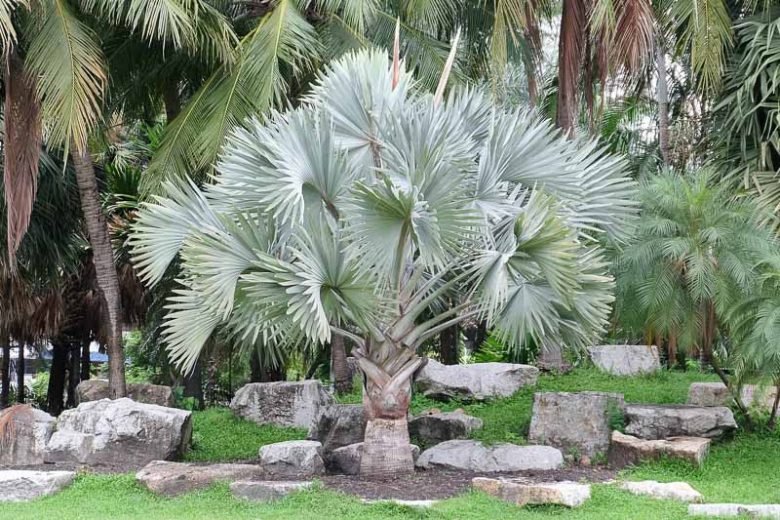Bismarck Palm
Palm Overview
Botanical Name: Bismarckia nobilis
Make a bold statement in your landscape with the Bismarck Palm—an architectural showstopper prized for its massive, silvery-blue fronds and regal presence. Native to Madagascar, this palm brings a tropical elegance that instantly elevates any space. It’s drought-tolerant, low-maintenance once established, and thrives in full sun, making it perfect for those who want stunning beauty without high upkeep. Whether framing a driveway, anchoring a front yard, or standing alone as a centerpiece, the Bismarck Palm adds unmatched grandeur and tropical drama to any property.
Plant Characteristics
| Characteristic | Details |
|---|---|
| Height | 30–50 feet (9–15 meters) tall when mature |
| Canopy Spread | 15–20 feet (4.5–6 meters) wide |
| Trunk | Thick, solitary, gray trunk up to 18 inches (45 cm) in diameter; ringed with old leaf scars |
| Fronds/Leaves | Large, fan-shaped, silvery-blue or green fronds up to 10 feet (3 meters) across; stiff and symmetrical |
| Growth Rate | Moderate — typically 12–18 inches (30–45 cm) per year in ideal conditions |
Environmental Needs
| Environmental Factor | Requirements |
|---|---|
| Sunlight | Full sun preferred; tolerates light shade but develops best color and form in direct sunlight |
| Soil | Well-draining soil; prefers sandy or loamy soils; moderately tolerant of poor soils if drainage is adequate |
| Watering | Low to moderate water needs; drought-tolerant once established but benefits from occasional deep watering |
| Hardiness | USDA Zones 9b–11; cold hardy to around 25°F (–3.8°C); may suffer damage below this without protection |
Fruit and Flowering
| Category | Details |
|---|---|
| Fruit | Small, round to oval, brown to black drupes about 1–1.5 inches (2.5–4 cm) in diameter; not edible |
| Sex | Dioecious – male and female flowers occur on separate plants |
| Time to Fruit | Typically begins to flower and fruit after 8–10 years in the ground, depending on growing conditions |
Uses
Specimen or focal point in landscapes due to its dramatic form and color
Ornamental centerpiece for large lawns, gardens, or entryways
Accent plant in tropical or Mediterranean-themed landscapes
Avenue or driveway lining (with adequate spacing)
Public spaces, parks, and resort landscaping
Drought-tolerant landscaping and xeriscaping
Adds architectural height and structure to open areas
Windbreak or visual screen when planted in groups
Container planting for young palms (in large pots or patio settings)
Enhances curb appeal and property value with a tropical flair
Maintenance
- Water regularly during the first 6–12 months after planting to help establish roots. Allow soil to dry slightly between waterings.
- Drought-tolerant once established; water deeply during extended dry periods, especially in hot climates
- Apply a slow-release, palm-specific fertilizer 2–3 times per year (spring, summer, and early fall) for optimal growth and color.
- Remove only fully dead or damaged fronds. Avoid over-pruning—leaves provide necessary nutrients and structure. Do not cut green fronds.
- Apply a 2–3 inch layer of mulch around the base (keeping it a few inches from the trunk) to retain moisture and suppress weeds.
- Allow at least 10–15 feet of clearance from structures and other plants to accommodate the wide canopy and trunk growth.
